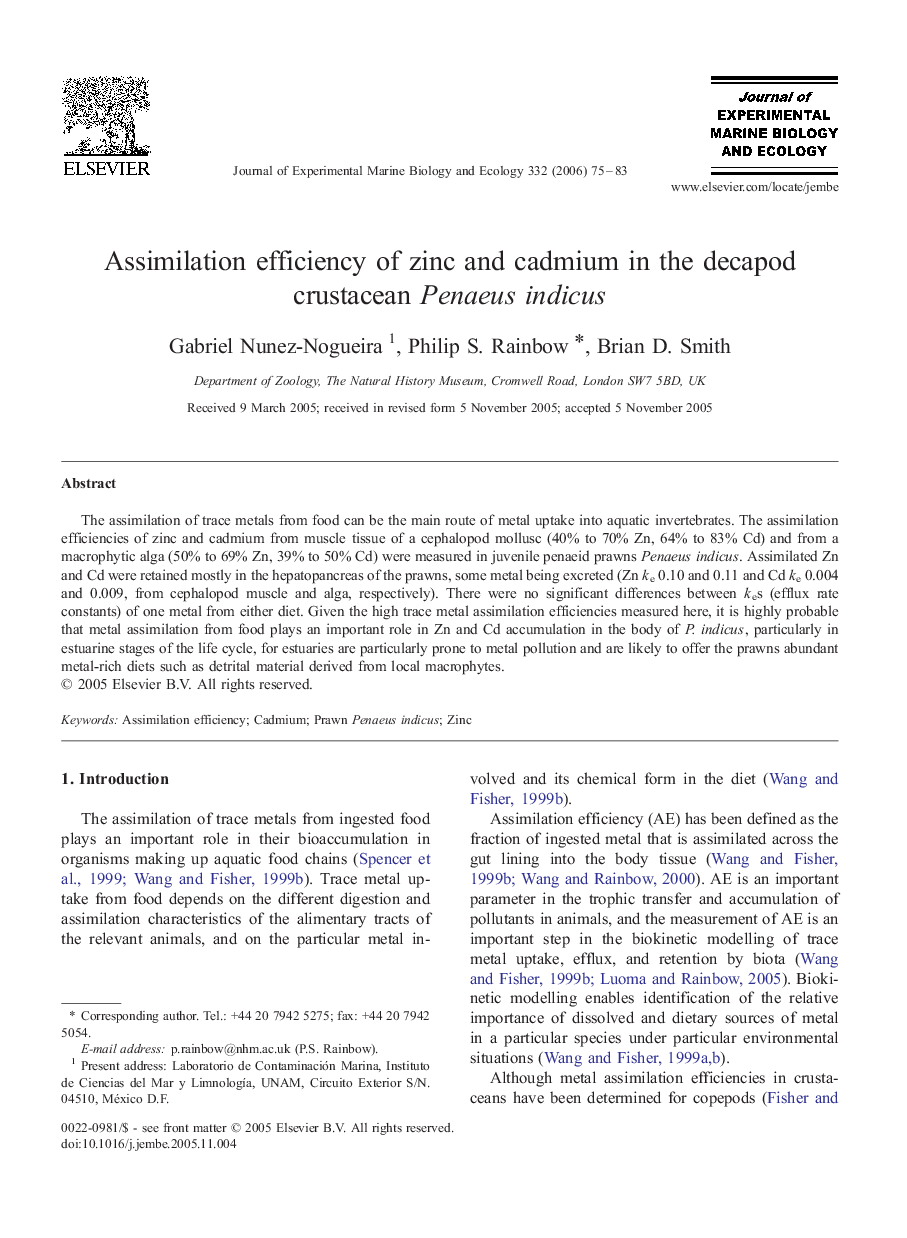| Article ID | Journal | Published Year | Pages | File Type |
|---|---|---|---|---|
| 4398083 | Journal of Experimental Marine Biology and Ecology | 2006 | 9 Pages |
Abstract
The assimilation of trace metals from food can be the main route of metal uptake into aquatic invertebrates. The assimilation efficiencies of zinc and cadmium from muscle tissue of a cephalopod mollusc (40% to 70% Zn, 64% to 83% Cd) and from a macrophytic alga (50% to 69% Zn, 39% to 50% Cd) were measured in juvenile penaeid prawns Penaeus indicus. Assimilated Zn and Cd were retained mostly in the hepatopancreas of the prawns, some metal being excreted (Zn ke 0.10 and 0.11 and Cd ke 0.004 and 0.009, from cephalopod muscle and alga, respectively). There were no significant differences between kes (efflux rate constants) of one metal from either diet. Given the high trace metal assimilation efficiencies measured here, it is highly probable that metal assimilation from food plays an important role in Zn and Cd accumulation in the body of P. indicus, particularly in estuarine stages of the life cycle, for estuaries are particularly prone to metal pollution and are likely to offer the prawns abundant metal-rich diets such as detrital material derived from local macrophytes.
Keywords
Related Topics
Life Sciences
Agricultural and Biological Sciences
Aquatic Science
Authors
Gabriel Nunez-Nogueira, Philip S. Rainbow, Brian D. Smith,
